- TOP
- Search Criteria
- Shikoku's 88 Temple Pilgrimage
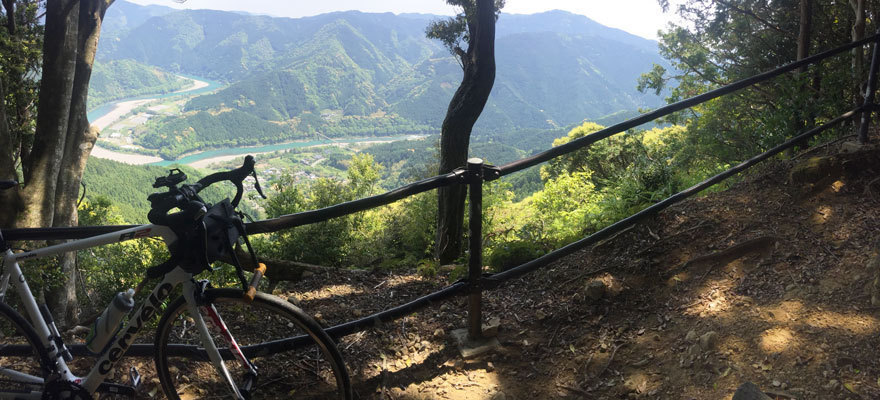
STORY
Shikoku's 88 Temple Pilgrimage:
Tips From the Trail
by guest writer Mitul Patel
Reasons vary as to why people embark on this grueling 1,200km / 750mi. 88 Temple Pilgrimage (四国八十八ヶ所; shikoku hachi juu hakkasho). For one old man I met, it was a chance to get away from his hectic, overtime-filled life in Tokyo. For a couple I met near the end of my trip, it was chance to get away and remember why they fell in love. And for one woman on the train home, the pilgrimage had been a personal fitness challenge.

I decided to become a pilgrim, or henro (遍路) in Japanese, and spend my Golden Week on the island of Shikoku to get out of my comfort zone and back into nature. Most people go along the same lines as time spent trekking alone allows you to sort through the thoughts and feelings that normally get tucked away due to the stress of everyday life.

Rest assured, no matter your Japanese level or trekking experience, this trip is 100% doable. If 1,200km seems overwhelming, then you can break up the route into several trips. Many people do this, including myself. I did temples 1 through 25 during Golden Week and plan on doing 25 through 50 in the fall.
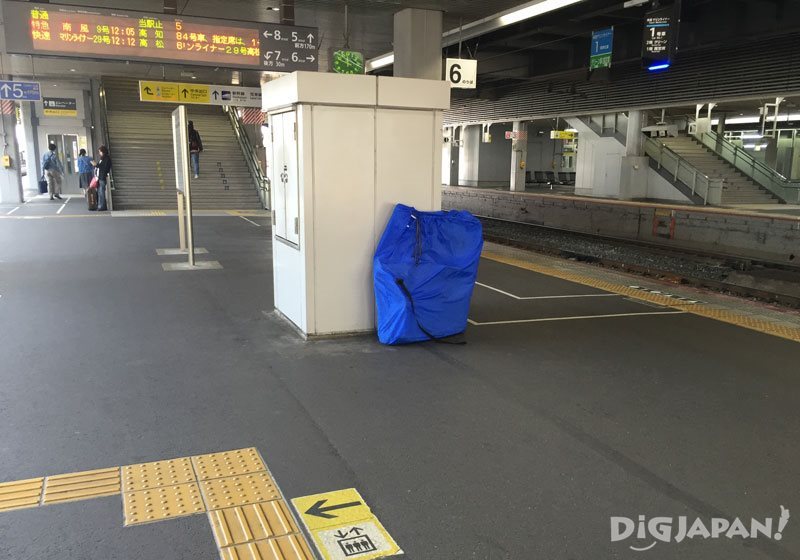
There are a few options for getting to Tokushima, the prefecture in Shikoku where your journey as a henro will start.
If you plan on traveling the henro route by bicycle, buses or trains are your best bet for getting to Shikoku with your ride. When traveling by bus, it’s a good idea to check with your bus company about policies regarding taking a bicycle. Even if you’ve traveled with a bike like this before, double check; different bus companies have different policies and you never know if a policy has changed.
If you take the Shinkansen or an express train, you can store your bike in the open space behind the last row of seats. For security reasons, be sure to inform a train crew member that you’re traveling with your bike even if your Japanese level only allows for pointing at your bike bag and your seat. No matter the transportation method, your bicycle will need to be stored inside a bike bag. These can be bought at most bike shops.
For those of you who’d rather walk the route, flying is also a possibility as there is an airport conveniently located in Tokushima.
My method of travel was train as I wanted to experience long distance travel by Shinkansen. Bright and early in the morning on Saturday of Golden Week, I cycled from where I lived in Gunma Prefecture to my local station and began a 7 hour and 27 minute train journey. I bought my tickets as I went, but tickets can be purchased in advance at JR Ticket Offices (called midori no madoguchi in Japanese) or online.
You’ll want to get off at Bando Station in Tokushima Prefecture, which is just a short walk from the first temple, Ryozen-ji. In total, it cost me 23,000 yen to get from my nearest station (Isesaki Station) to Bando Station. Prices will vary depending on your departure station. For a cheaper option, night buses are a good way to go. Willer Express is a popular company for overnight buses from Tokyo to the Kansai/Shikoku region.
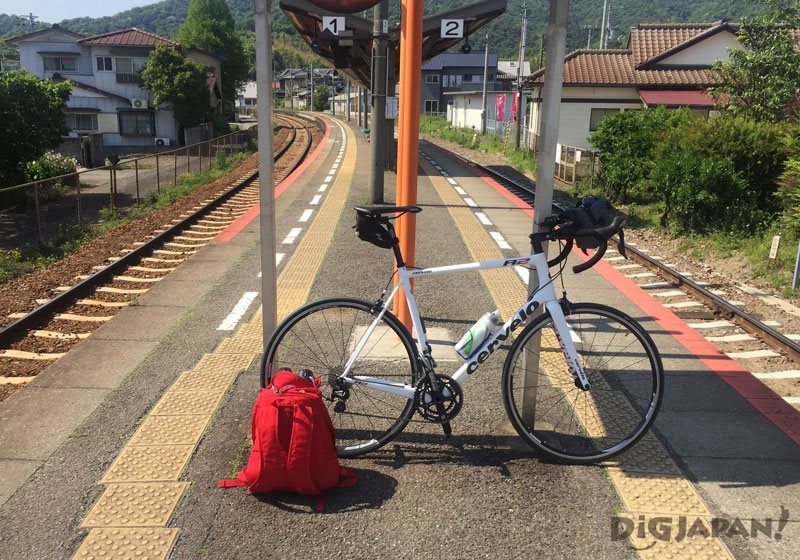
Biking henro!
In addition to the obvious necessity of a functioning bike, a bike specific multi-tool, two spare tubes, a spare tire, and tire levers should be enough to keep you going on the road. As for clothes and such, pack light. I took two sets of clothes, a bag of toiletries, headphones, a charger for my phone, one lightweight jacket, a pair of gloves, and of course a helmet. One thing I wish I would have done differently, however, is not carry all my things in my backpack. By the second day, my shoulders and back were unbelievably sore and I had to increase my number of rest stops. I highly recommend that you invest in bike panniers and keep your back open to the air.
Walking henro!
A solid pair of hiking boots and maybe a secondary pair of sneakers would cover you in the foot department. For other items, I would recommend the same set as for those going by bike. However, as you will be walking, I suggest maybe 3 or 4 sets of clothes as you have the room for it. Also, a compass, flashlight, multi-knife, and a water bottle will be very important as time spent in between towns and villages will be longer for you. I also recommend that you carry food with you for this reason.
Lastly, here's some advice I heard from walking henro: do not cheap out when selecting a trekking bag. Poor materials and construction will lead to some painful decision making if your pack bursts and you are forced to pick what to carry, or at the very least have to bodge your bag and stress about further damage.
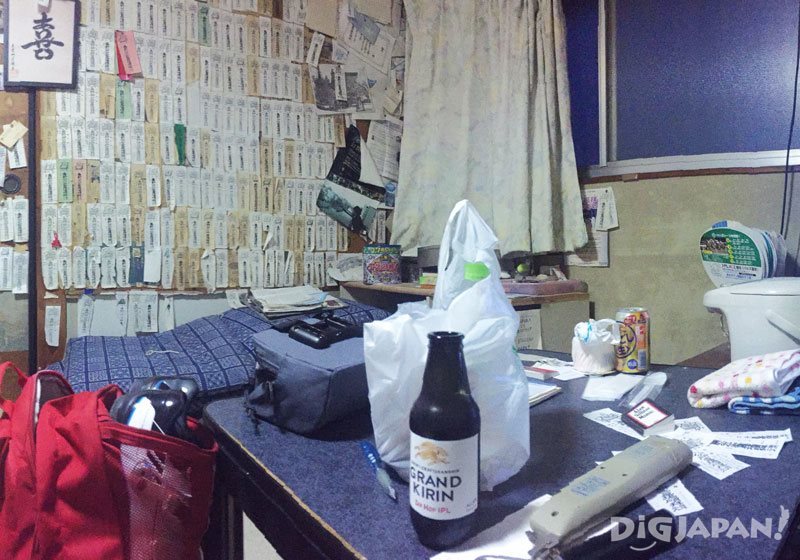
There are plenty of places to stay or camp on the pilgrimage route. Airbnb is an amazing tool for finding places to stay if you do not speak much Japanese. Two of my overnight stops were through Airbnb and most hosts spoke English. When there were no Airbnb listings in the area, I used Google to find guest houses and business hotels. One place I stayed at was the Guest House Oyado Hiwasa near Minami near Temple 23, Yakuo-ji. They have English-speaking staff and take reservations by both email and phone.
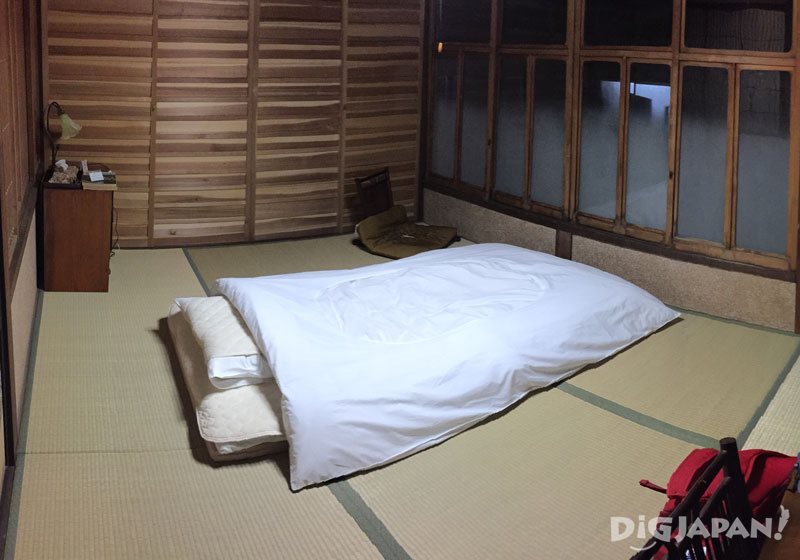
At this time there aren’t any Airbnb listings around temples 24 (Hotsumisaki-ji), 25 (Shinsho-ji), and 26 (Kongocho-ji). However, the local hotels and ryokan of the area have come together to create a joint website to provide accommodations for travelers. The website does not have an English version, so asking a Japanese speaker for help making your reservation is recommended.
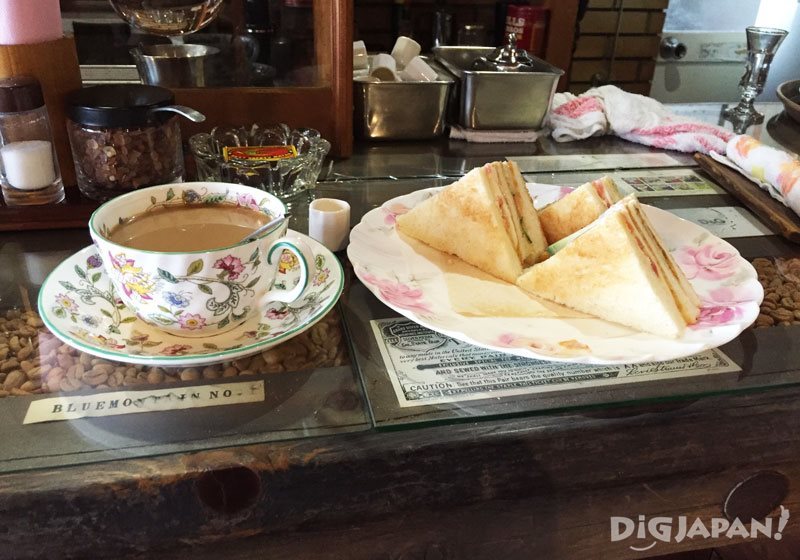
Another possibility is to just leave it up to adventure as I did on day three. I stopped at a cafe at the end of my day to ponder where to stay and got to chit chatting with the owner, Fujioka. He told me about a great guy who has put up henro through the years, introduced me, and I ended up staying there! It was the room with all the stamps above.
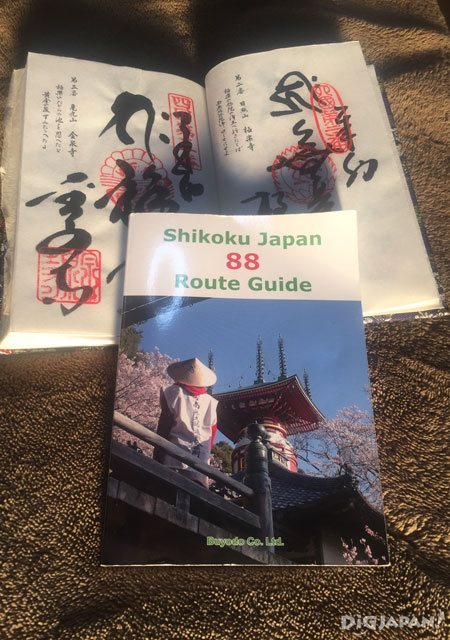
Near the first temple, there is a store that sells henro goods such as incense and the iconic straw hat worn by pilgrims called a sugegasa. Important: this store is one of the only to have an English guide to pilgrimage. Absolutely get this book! The guide has critical information such as how to find places to stay, how to pray at the temples, road maps, topographic maps, and much more. Thanks to this book, I knew to pace myself up the mountain near temple 12 (Shosan-ji). You may also want to pick up a noukyouchou (納経帳), a book that you can get stamped at each temple. It costs 300 yen per stamp, but trust me it is well worth it. Not only do you get to meet monks and chat with them for a bit, but watching them glide their brush as they stamp your book is a sight to behold.

Road signs indicating the location of the next temple are always posted up by normal road signs. These will confirm you are on the henro trail. However, sometimes, the markers can be hidden due to various factors like an overgrowth of plants so keep an eye out for them. If you get lost and don’t have a cell phone with a GPS, be sure to keep the guide with you. Also, locals will be able to point out where you are and help you orient yourself. For Strava users, you can map out the pilgrimage like I did and follow it on your phone. However, be warned that this will decrease your battery life by a good margin.
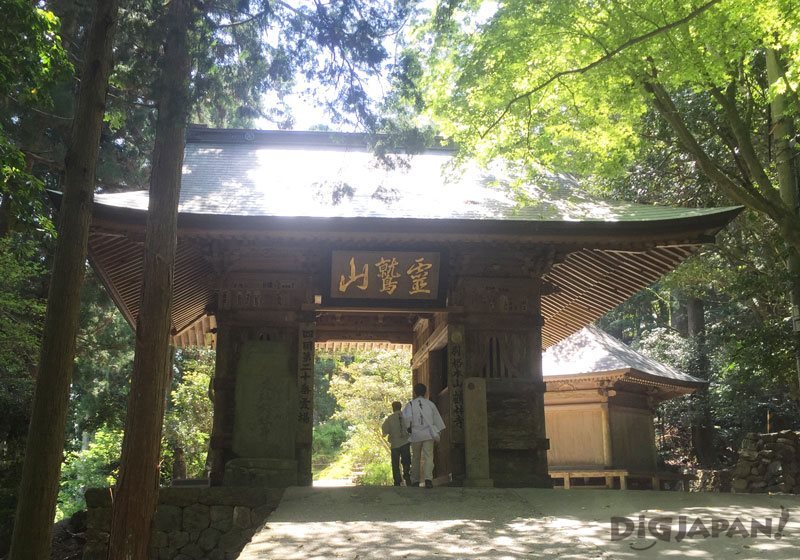
Now for some travel advice. First and foremost is a classic: pace yourself. You don’t want to set such a slow pace on the first day that you have to play catch-up for the rest of your trip. When planning your trip, keep in mind that many temples can take 20 to 40 minutes to fully explore, pray, and get your book stamped.
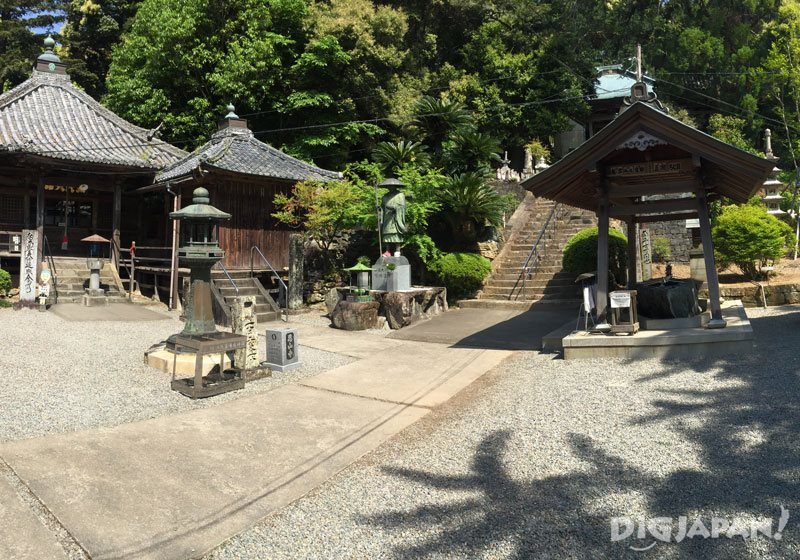
Many temples also have rest areas in the shade, so make sure you take advantage of those. Also, be sure to consume plenty of carbohydrates and electrolytes. Carbohydrates are critical for fueling muscles while electrolytes are great for preventing cramps and keeping you hydrated. Pocari Sweat and Aquarius are examples of electrolyte drinks commonly sold in vending machines. Be sure to drink between 500 ml to a liter of liquids to keep well-hydrated in that bright Shikoku sun.
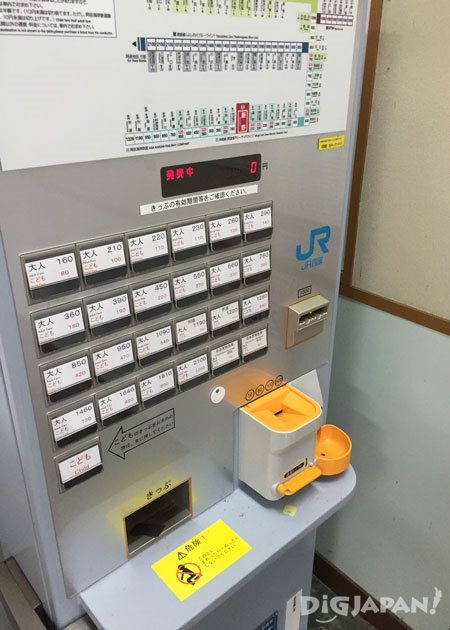
In case of injury or emergency that requires you to go home ASAP, there are train stations and bus stops sporadically throughout Shikoku. You can find them on the map in the guide book mentioned above. Please be advised that trains often run infrequently in rural areas. Additionally, some stations have only ticket machines like the one pictured above and do not take electronic train passes like Suica.
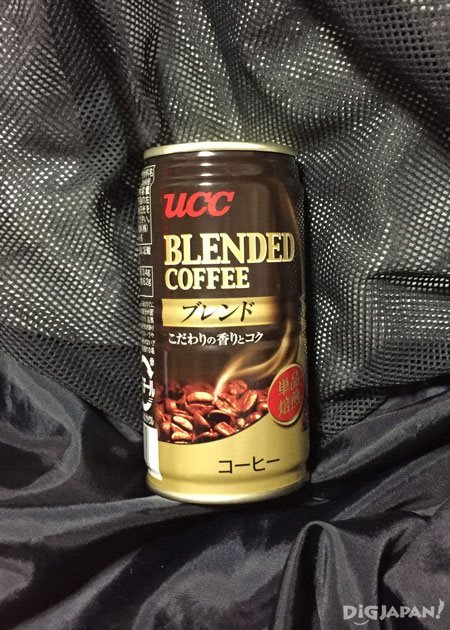
Whatever your reason for wanting to try the 88 Temple Pilgrimage, get out there! And be sure to say hello to all your fellow henro. You never know who you’ll meet. In fact, meeting various people along my pilgrimage was the greatest part of the journey for me. For example, at temple 17 (Ido-ji) near my overnight stop, I rolled in absolutely exhausted. An older lady henro to whom I’d said hello to earlier noticed this and came over to hand me a canned coffee. Although I didn’t understand a thing she said in her thick Kansai accent, her smile was enough.
About the author
Mitul Patel can often be found out cycling, hiking, or playing futsal. Hailing from the cold tundra of Wisconsin in United States, he's more of a cold weather person than a summer person. At 24 years old, he has been in Japan for a little over a year.
Reasons vary as to why people embark on this grueling 1,200km / 750mi. 88 Temple Pilgrimage (四国八十八ヶ所; shikoku hachi juu hakkasho). For one old man I met, it was a chance to get away from his hectic, overtime-filled life in Tokyo. For a couple I met near the end of my trip, it was chance to get away and remember why they fell in love. And for one woman on the train home, the pilgrimage had been a personal fitness challenge.

Horin-ji, the 9th temple on the route.
I decided to become a pilgrim, or henro (遍路) in Japanese, and spend my Golden Week on the island of Shikoku to get out of my comfort zone and back into nature. Most people go along the same lines as time spent trekking alone allows you to sort through the thoughts and feelings that normally get tucked away due to the stress of everyday life.

One of the many views you'll see from the road as you enter the real inaka or countryside of Shikoku.
Rest assured, no matter your Japanese level or trekking experience, this trip is 100% doable. If 1,200km seems overwhelming, then you can break up the route into several trips. Many people do this, including myself. I did temples 1 through 25 during Golden Week and plan on doing 25 through 50 in the fall.
How to Get There

My bicycle inside a bike bag on a train platform, waiting for the train to Shikoku.
There are a few options for getting to Tokushima, the prefecture in Shikoku where your journey as a henro will start.
If you plan on traveling the henro route by bicycle, buses or trains are your best bet for getting to Shikoku with your ride. When traveling by bus, it’s a good idea to check with your bus company about policies regarding taking a bicycle. Even if you’ve traveled with a bike like this before, double check; different bus companies have different policies and you never know if a policy has changed.
If you take the Shinkansen or an express train, you can store your bike in the open space behind the last row of seats. For security reasons, be sure to inform a train crew member that you’re traveling with your bike even if your Japanese level only allows for pointing at your bike bag and your seat. No matter the transportation method, your bicycle will need to be stored inside a bike bag. These can be bought at most bike shops.
For those of you who’d rather walk the route, flying is also a possibility as there is an airport conveniently located in Tokushima.
My method of travel was train as I wanted to experience long distance travel by Shinkansen. Bright and early in the morning on Saturday of Golden Week, I cycled from where I lived in Gunma Prefecture to my local station and began a 7 hour and 27 minute train journey. I bought my tickets as I went, but tickets can be purchased in advance at JR Ticket Offices (called midori no madoguchi in Japanese) or online.
You’ll want to get off at Bando Station in Tokushima Prefecture, which is just a short walk from the first temple, Ryozen-ji. In total, it cost me 23,000 yen to get from my nearest station (Isesaki Station) to Bando Station. Prices will vary depending on your departure station. For a cheaper option, night buses are a good way to go. Willer Express is a popular company for overnight buses from Tokyo to the Kansai/Shikoku region.
What to Bring

I got really excited and built my bicycle back up on the platform the moment I got off at my final stop!
Biking henro!
In addition to the obvious necessity of a functioning bike, a bike specific multi-tool, two spare tubes, a spare tire, and tire levers should be enough to keep you going on the road. As for clothes and such, pack light. I took two sets of clothes, a bag of toiletries, headphones, a charger for my phone, one lightweight jacket, a pair of gloves, and of course a helmet. One thing I wish I would have done differently, however, is not carry all my things in my backpack. By the second day, my shoulders and back were unbelievably sore and I had to increase my number of rest stops. I highly recommend that you invest in bike panniers and keep your back open to the air.
Walking henro!
A solid pair of hiking boots and maybe a secondary pair of sneakers would cover you in the foot department. For other items, I would recommend the same set as for those going by bike. However, as you will be walking, I suggest maybe 3 or 4 sets of clothes as you have the room for it. Also, a compass, flashlight, multi-knife, and a water bottle will be very important as time spent in between towns and villages will be longer for you. I also recommend that you carry food with you for this reason.
Lastly, here's some advice I heard from walking henro: do not cheap out when selecting a trekking bag. Poor materials and construction will lead to some painful decision making if your pack bursts and you are forced to pick what to carry, or at the very least have to bodge your bag and stress about further damage.
Where to Stay

This room has hosted many henro over the years. Each sticker on the wall was written by a henro. I found this place through a friend of a coffee shop owner.
There are plenty of places to stay or camp on the pilgrimage route. Airbnb is an amazing tool for finding places to stay if you do not speak much Japanese. Two of my overnight stops were through Airbnb and most hosts spoke English. When there were no Airbnb listings in the area, I used Google to find guest houses and business hotels. One place I stayed at was the Guest House Oyado Hiwasa near Minami near Temple 23, Yakuo-ji. They have English-speaking staff and take reservations by both email and phone.

My accommodation near temple 24, Hotsumisaki-ji.
At this time there aren’t any Airbnb listings around temples 24 (Hotsumisaki-ji), 25 (Shinsho-ji), and 26 (Kongocho-ji). However, the local hotels and ryokan of the area have come together to create a joint website to provide accommodations for travelers. The website does not have an English version, so asking a Japanese speaker for help making your reservation is recommended.

The meal I had at the coffee shop where I stopped for dinner and to ponder where to stay one night. It was run by an amazing guy named Fujioka.
Another possibility is to just leave it up to adventure as I did on day three. I stopped at a cafe at the end of my day to ponder where to stay and got to chit chatting with the owner, Fujioka. He told me about a great guy who has put up henro through the years, introduced me, and I ended up staying there! It was the room with all the stamps above.
Get the Guide

In the foreground is the English Guide to the journey and in the background is the stamp book
Near the first temple, there is a store that sells henro goods such as incense and the iconic straw hat worn by pilgrims called a sugegasa. Important: this store is one of the only to have an English guide to pilgrimage. Absolutely get this book! The guide has critical information such as how to find places to stay, how to pray at the temples, road maps, topographic maps, and much more. Thanks to this book, I knew to pace myself up the mountain near temple 12 (Shosan-ji). You may also want to pick up a noukyouchou (納経帳), a book that you can get stamped at each temple. It costs 300 yen per stamp, but trust me it is well worth it. Not only do you get to meet monks and chat with them for a bit, but watching them glide their brush as they stamp your book is a sight to behold.
How to Travel

Examples of road signs that you may encounter. These signs were for temple 20 (Kakurin-ji).
Road signs indicating the location of the next temple are always posted up by normal road signs. These will confirm you are on the henro trail. However, sometimes, the markers can be hidden due to various factors like an overgrowth of plants so keep an eye out for them. If you get lost and don’t have a cell phone with a GPS, be sure to keep the guide with you. Also, locals will be able to point out where you are and help you orient yourself. For Strava users, you can map out the pilgrimage like I did and follow it on your phone. However, be warned that this will decrease your battery life by a good margin.

Kakurin-ji Temple.
Now for some travel advice. First and foremost is a classic: pace yourself. You don’t want to set such a slow pace on the first day that you have to play catch-up for the rest of your trip. When planning your trip, keep in mind that many temples can take 20 to 40 minutes to fully explore, pray, and get your book stamped.

One of the simpler layouts that the temples could have. To the left of the stairs is where you wash your hands and mouth.
Many temples also have rest areas in the shade, so make sure you take advantage of those. Also, be sure to consume plenty of carbohydrates and electrolytes. Carbohydrates are critical for fueling muscles while electrolytes are great for preventing cramps and keeping you hydrated. Pocari Sweat and Aquarius are examples of electrolyte drinks commonly sold in vending machines. Be sure to drink between 500 ml to a liter of liquids to keep well-hydrated in that bright Shikoku sun.
Emergencies on the Trail

No Suica here: have cash ready to buy tickets when traveling in rural Shikoku.
In case of injury or emergency that requires you to go home ASAP, there are train stations and bus stops sporadically throughout Shikoku. You can find them on the map in the guide book mentioned above. Please be advised that trains often run infrequently in rural areas. Additionally, some stations have only ticket machines like the one pictured above and do not take electronic train passes like Suica.
Say "Hello" to Other Henro

This is the blended coffee I was given. Not the best cup of coffee I have ever had, but certainly one of the most memorable.
Whatever your reason for wanting to try the 88 Temple Pilgrimage, get out there! And be sure to say hello to all your fellow henro. You never know who you’ll meet. In fact, meeting various people along my pilgrimage was the greatest part of the journey for me. For example, at temple 17 (Ido-ji) near my overnight stop, I rolled in absolutely exhausted. An older lady henro to whom I’d said hello to earlier noticed this and came over to hand me a canned coffee. Although I didn’t understand a thing she said in her thick Kansai accent, her smile was enough.
About the author
Mitul Patel can often be found out cycling, hiking, or playing futsal. Hailing from the cold tundra of Wisconsin in United States, he's more of a cold weather person than a summer person. At 24 years old, he has been in Japan for a little over a year.

Liked this story? Like DiGJAPAN!
on Facebook for daily updates!
THIS ARTICLE IS BASED ON INFORMATION FROM 08 25,2016 Author:DiGJAPAN! Editorial Team













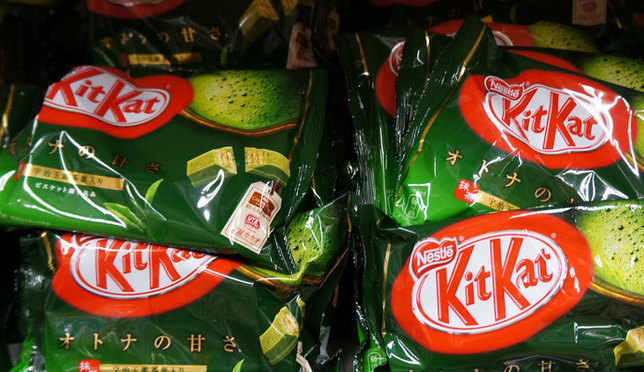
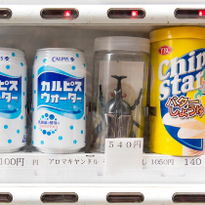







NEW COMMENT | 0 COMMENTS
Open a DiGJAPAN!
account to comment.
Open a DiGJAPAN! Account